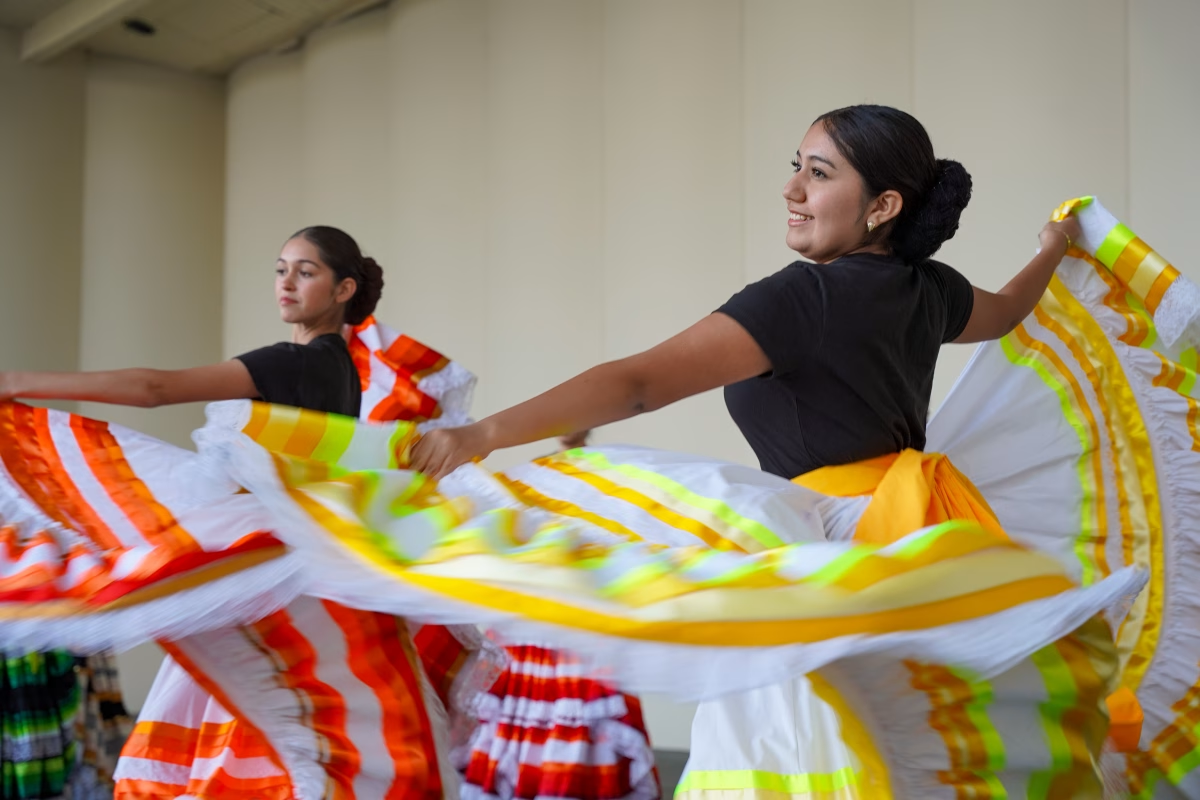A dazzling array of colorful embroidered skirts spun in synchronicity and the sound of stomping boot soles echoed as Ballet Folklorico Chicago dancers practiced at the Petrillo Music Shell in Grant Park, for the closing ceremony of El Grito Chicago, on Sunday, September 15.
El Grito Chicago is a two-day festival honoring Mexican Independence Day, in hopes of bringing back and expanding a celebration to commemorate the Mexican immigrant community in Chicago.
The group hastened in unison to prepare for the big day.
Ofelia Guerra, founder of Ballet Folklorico de Chicago, never imagined she would open a non-profit dance school considering she’s not a dancer to begin with.
Guerra, who graduated from Depaul University in 1997, has worked in finance at Citigroup for over 20 years.
But about five years ago, she started Ballet Folklorico de Chicago to immerse her two daughters in their Mexican culture through language and dance. After the commute to the nearest Mexican folklore school wasn’t sustainable, Guerra said.
“At first I paid my sister’s goddaughter to teach my daughters Mexican folklore dance and if anyone from the community wanted to join, they were welcome too,” said Guerra.
They began as a small organization in the park district which slowly grew. Today, the school located in Portage Park has nine instructors teaching around 500 students.
People of all ages with a passion to indulge in the richness of their Mexican culture are welcome to join, Guerra said.

Paola Cardona, 13, has been dancing since she was 10 years old with Ballet Folklorico Chicago. She said while learning folkloric dance with the company, she’s able to make friends her age from within the latine community.
Cardona and her fellow dance-mates sported different traditional Mexican folklore garments with the Mariachi Monumental, who accompanied them on stage for El Grito Chicago’s last performance ending the two-day festival.
One of the group’s most symbolic outfit arrangements is the “Chicago vestuario,” which features Chicago’s distinct blue, white, and red hues along with the four stars on their headpieces.
They represent the love of their city and culture in one ensemble which is set to be displayed in Chicago’s History Museum in 2025, said Guerra.
One of the event organizers, Korina Sanchez, who is part of Third Coast Hospitality Group and German Gonzalez, of Somos Hospitality, formed a group called “Grito 916.”
In conjunction with the Illinois Hispanic Chamber of Commerce and the Mexican consulate of Chicago, the organizations gathered to bring forth the Mexican Independence Festival.

“We wanted to find a fun way to alleviate all of the traffic and congestion that tends to happen on Mexican Independence Day here in the city,” Sanchez said.
Grito 916 had been working closely with Jaime Di Paulo, CEO of the Illinois Hispanic Chamber of Commerce when he received a notice from the Illinois Department of Commerce and Economic Opportunities–IDCEO– of the Tourism Private Sector Grant.
They submitted a 10-page application to the city to get financial support for the festival and finally got it earlier this year.
“The Mexican community in this country is an example of tenacity and hard work,” said Reyna Torres Mendivil, Consul General, of the Consulate General of Mexico in Chicago. “We know that Mexicans are talented, responsible, hardworking and entrepreneurial.”
The presence of Mexicans not only benefits the economy but strengthens communities with our values and culture; we invite our Chicago communities to celebrate our national holidays with pride, unity, and responsibility, said Mendivil.
Guerra said she is happy to provide a space in Chicago, through dance groups like Ballet Folklorico, because they showcase the pride that Mexican Americans have for their community.
Lila Salabert, now 13, has been dancing with the company for three years.
“My favorite part about dancing with them is being able to learn the stories behind the dances and being able to share my culture through performances,” said Salabert.


